Many online recipes for how to cook spaghetti squash in the oven will tell you to poke holes in the squash and bake it at 350 F… but I think this is a huge mistake!
With spaghetti squash, most people seem to fall into one of two categories:
There are those who LOVE spaghetti squash as a lower-calorie replacement for spaghetti. And there are those who shun it, believing that if you’re going to eat pasta, you should enjoy the real thing.
But I feel that looking at spaghetti squash as a pasta “substitute” in the first place does the vegetable an unfair disservice.
The unique taste and texture of spaghetti squash ought to be appreciated in their own right, not compared to carb-filled noodles.
No matter how many websites you find that claim their spaghetti squash recipe “tastes just like the real thing,” spaghetti squash will never be pasta.
And that’s completely okay!
You May Also Like: Cauliflower Mac And Cheese – Healthy Comfort Food
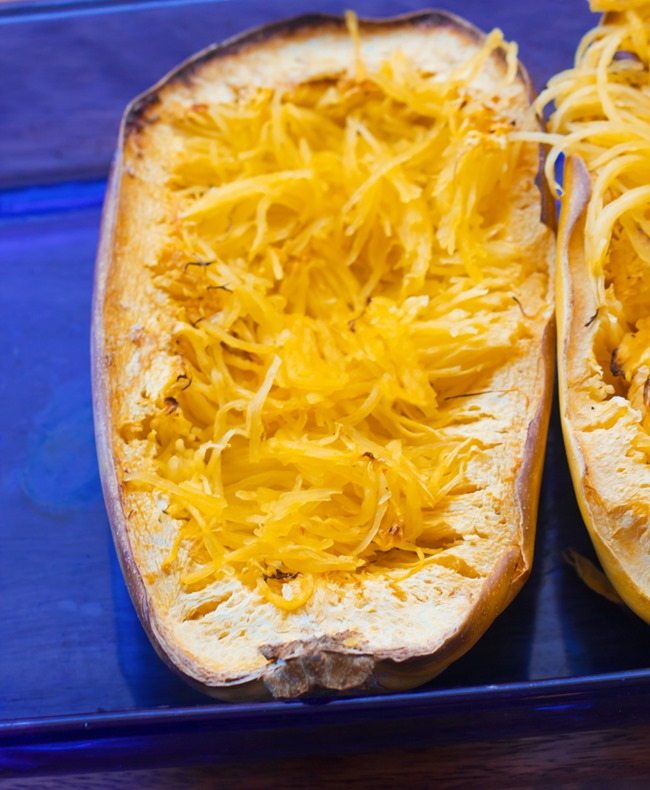
Another thing to keep in mind if you think you hate spaghetti squash is that it might just be the way you’ve been cooking it.
So many tutorials for how to cook spaghetti squash will tell you to poke holes in the vegetable, add water to the bottom of the pan, and either cook the whole thing or two halves at 350 F or 375 F.
I think this is a mistake because the extra water and lower temperature mean you end up with watery, steamed spaghetti squash instead of sweet, roasted spaghetti squash, especially if you don’t cut the squash in half to give the moisture inside the squash a place to escape.
And watery strands will, in turn, also water down whatever sauce you choose to put on your spaghetti squash after cooking. If you’ve made spaghetti squash this way and do prefer steamed strands, that’s fine…
But I much prefer it roasted, so if you’ve had spaghetti squash in the past and think you aren’t a fan, it might be worth giving the vegetable one more chance.
The following recipe is my favorite method for how to cook a spaghetti squash that yields non-watery results every time.
It calls for roasting the spaghetti squash at 460 F, which is higher than any other recipe I’ve ever seen and works beautifully to caramelize the natural sugars in the squash and zap away extra moisture, leaving you with perfectly cooked spaghetti squash that is ready to be dressed up however you wish or even eaten by itself.
Trending Recipe: Buffalo Cauliflower Wings
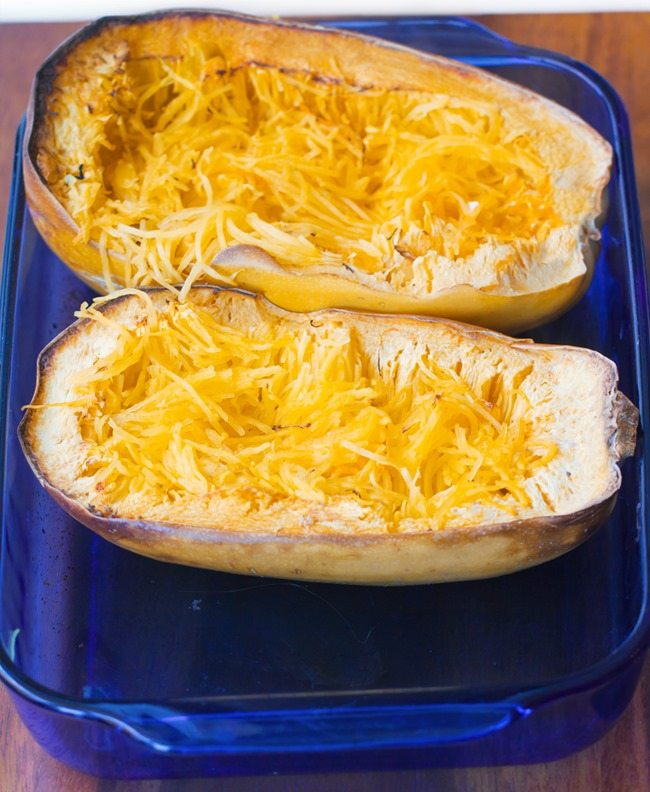
How To Bake Spaghetti Squash
Start by carefully cutting the spaghetti squash in half, lengthwise.
EDIT: Many readers say that cutting it width-wise is even better because you get much longer strands. I haven’t tried that yet, but I am intrigued! (Have any of you tried it?)
Place the squash—flat sides up—in a baking pan. If desired, scoop out the seeds and brush the squash with olive oil and sprinkle with salt. I usually opt to scoop out the seeds after baking.
Place the pan on the middle rack in a non-preheated oven, and turn the oven to 460 F.
Most spaghetti squashes will take around 40-50 minutes to fully roast, depending on the size of the squash; but if you have a small squash, it’s a good idea to check it after 20-30 minutes or so.
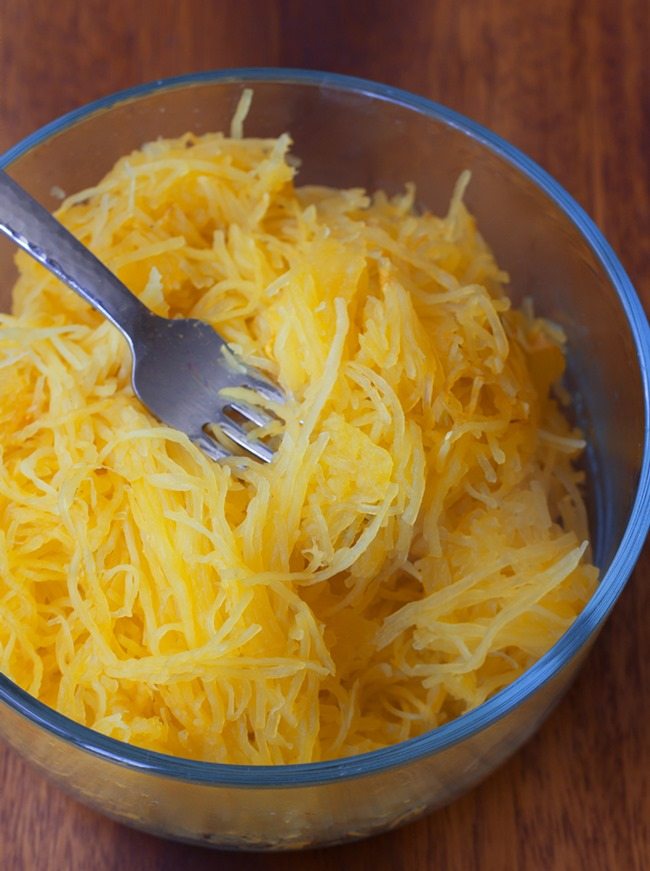
Scoop out the strands, and add tomato sauce, cheesy sauce, alfredo sauce, Mushroom Stroganoff, salad dressing, pesto, or any other sauce you’d add to pasta.
You could also top the spaghetti squash with a Coconut Curry, vegetable stew, or Vegetarian Chili like you’d do with rice. It is the perfect blank canvas for thousands of recipes.
Below are a few of my favorite sauces to use with spaghetti squash.
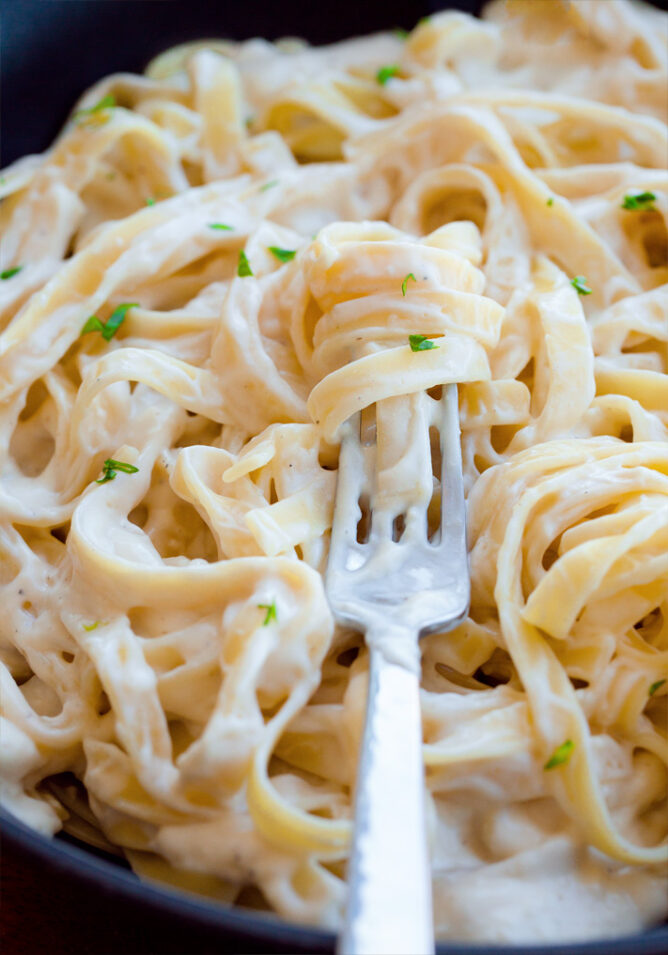
Spaghetti Squash Recipes:
Cauliflower Alfredo Sauce (Reader Favorite)
Try any of the above sauces over spaghetti squash. Or there are also recipes on my blog for spaghetti squash lo mein, spaghetti squash parmigiana, avocado alfredo, and numerous others.
Or you can keep things simple by seasoning the baked spaghetti squash with salt and olive oil or buttery spread – it makes the perfect accompaniment to sautéed kale and a toasted English muffin, as seen in the photo below.
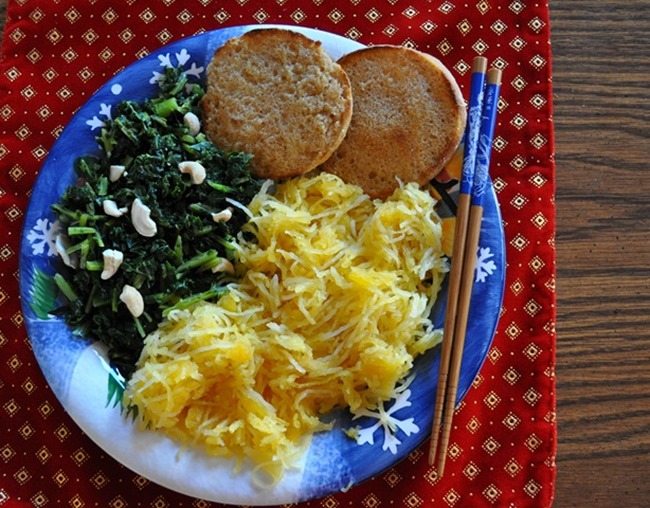
(Above, roasted spaghetti squash with sauteed kale and a homemade English muffin, using my favorite English muffin recipe from my cookbook.)
I’ve written up the recipe for how to cook spaghetti squash in the oven and am also including instructions for how to cook spaghetti squash in the microwave for those of you who would rather not cook it in the oven.
My preference is for the oven-roasted spaghetti squash, but the microwave version will work if you are short on time and want something quick and easy.
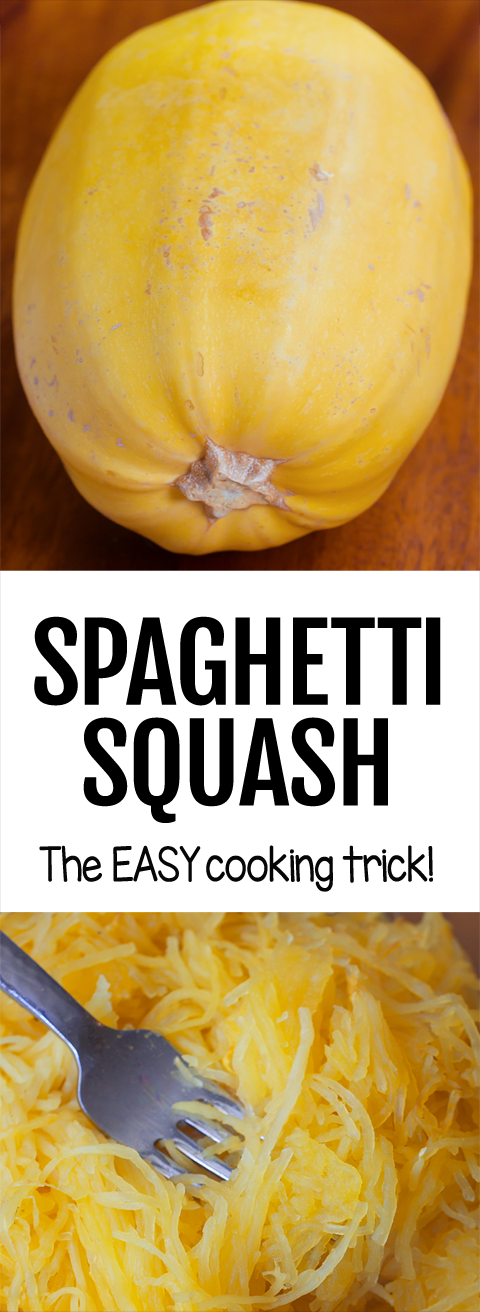
How To Cook Spaghetti Squash
Ingredients
- 1 large spaghetti squash
- optional olive oil, salt, etc.
- sauce or seasonings as desired
Instructions
- *Note that larger spaghetti squashes tend to yield sweeter strands. However, small ones will also work if they are all you can find. To Make: Carefully cut the spaghetti squash in half, lengthwise. (Some readers say that cutting it width-wise gives you longer strands. I haven ‘t tried this yet, but I am intrigued!) Place the squash—flat sides up—in a baking pan. If desired, scoop the seeds out and brush the squash strands with olive oil and sprinkle with salt. You can opt to scoop the seeds out and season after baking if you prefer. Place the pan on the middle rack in a non-preheated oven, then set the oven to 460 F. Large squashes will take around 40-50 minutes to roast fully, but very small ones may take less time, so it’s a good idea to check the squash after 20-30 minutes. Remove from the oven, and scoop out the strands. If you’d like, you can mix the strands with other ingredients and then stuff them back into the hollowed-out spaghetti squash shells. I've found that storing the strands in a glass pyrex and covering only with a paper towel is best, because it allows water to escape instead of getting trapped inside the container and weighing down the roasted squash. If you make this recipe, don't forget to leave a review!View Nutrition FactsMicrowave Method:If you’re short on time and don’t mind more of a steamed-spaghetti-squash result, you can cook your spaghetti squash in the microwave. I do highly recommend trying the oven version at some point, though! To microwave: Poke holes in the spaghetti squash, cut in half lengthwise, and scoop out the seeds if desired. Fill a glass baking dish about 1/4 up with water, then place the squash—flat sides down—in the pan and microwave 10-15 minutes or until tender. Remove from the microwave, and scoop out the strands.Instant Pot Spaghetti Squash:Cut the squash in half, put the steamer insert into the instant pot, add 1 cup water and the squash, and cook on manual for about 8 minutes (more or less, depending on squash size). Thanks to reader Lauren for creating this version and letting us know it works in an instant pot!
Notes
Have you made this recipe?
Tag @chocolatecoveredkatie on Instagram
More Healthy Recipes
Banana Recipes – 30 Healthy Ideas
Lentil Soup – Reader favorite recipe
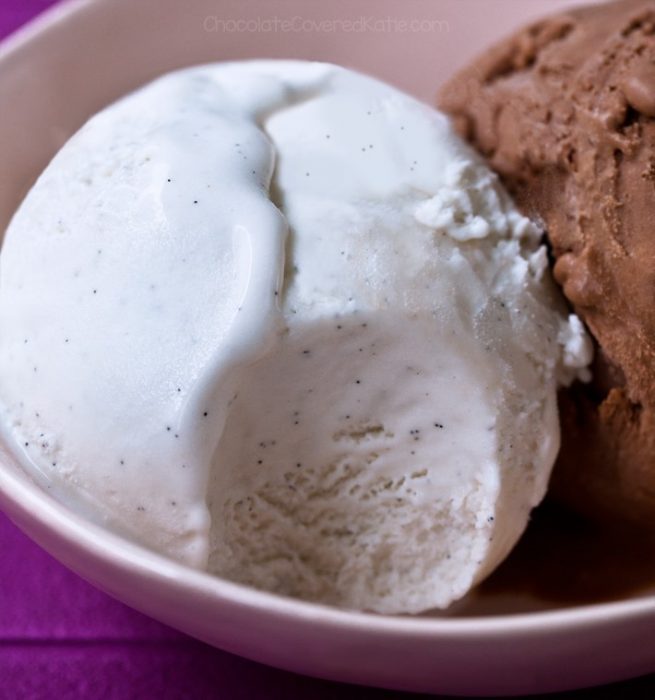
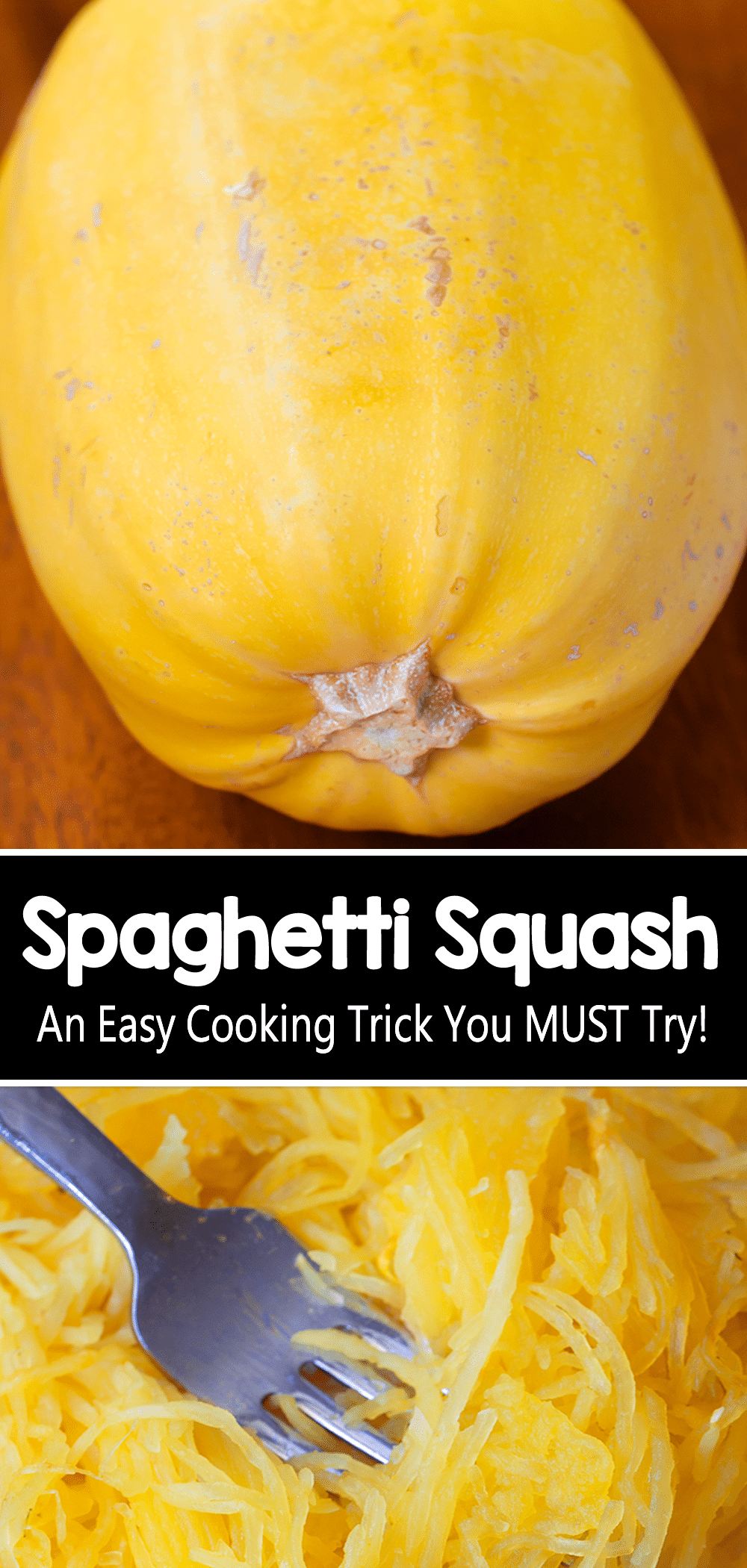
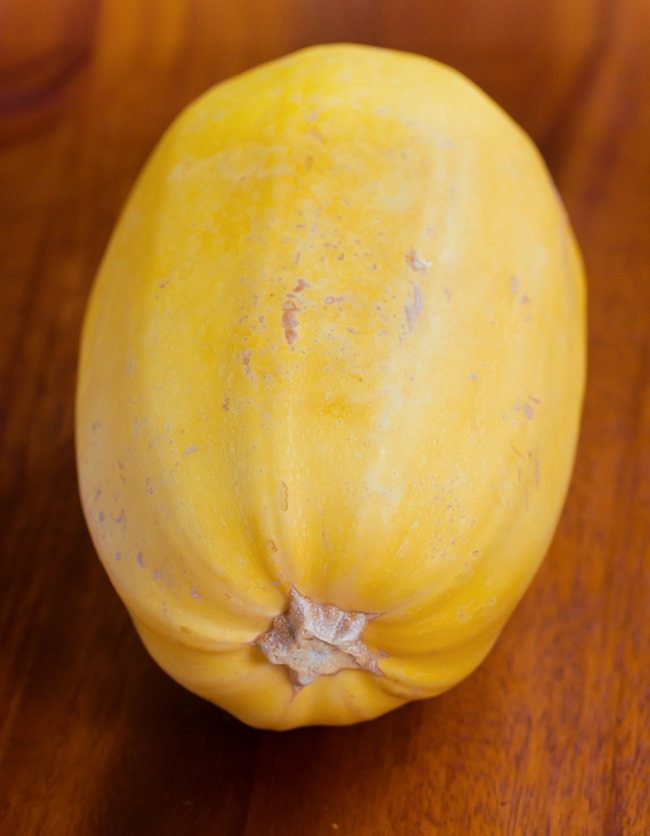


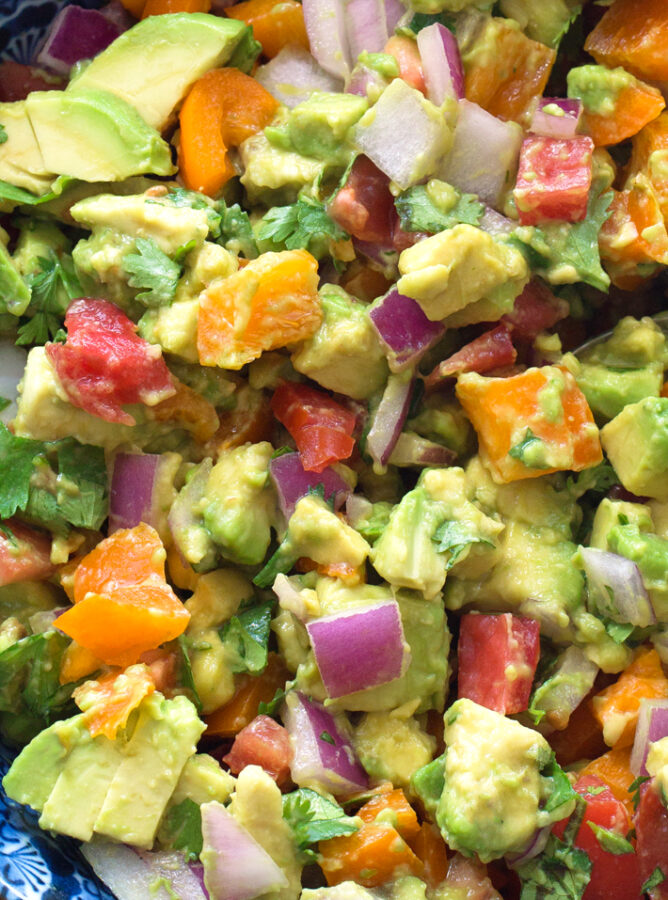


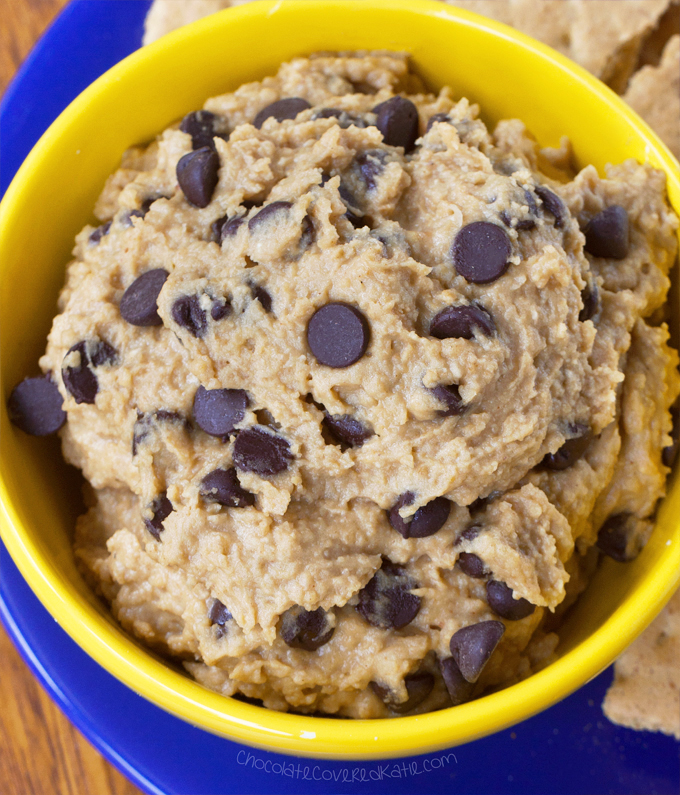
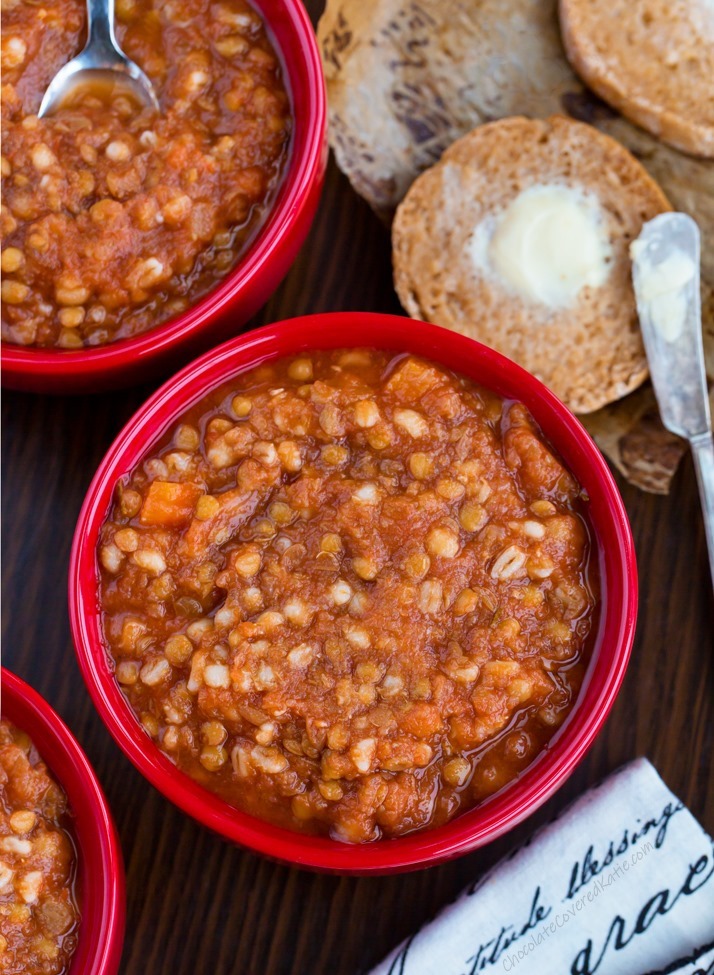
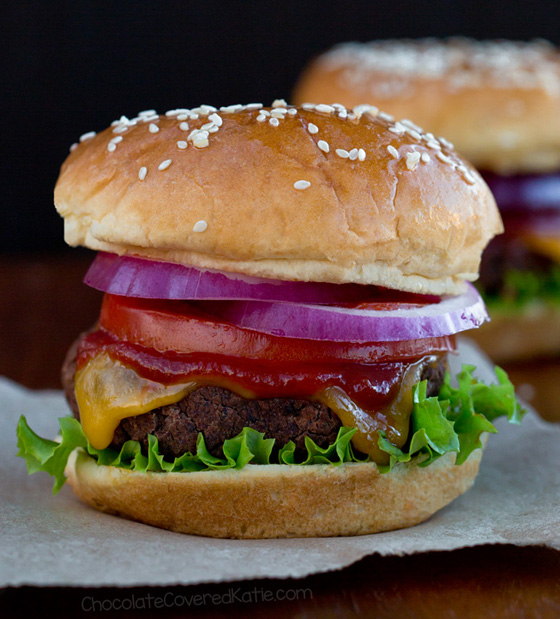




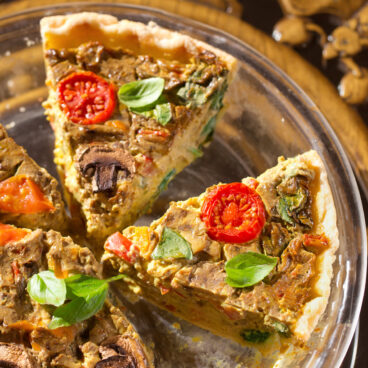
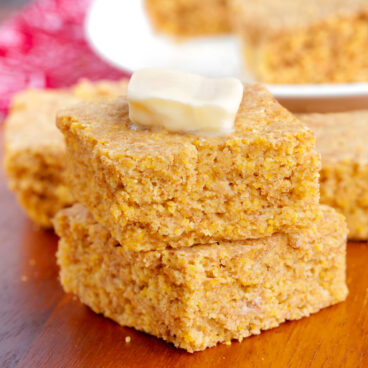
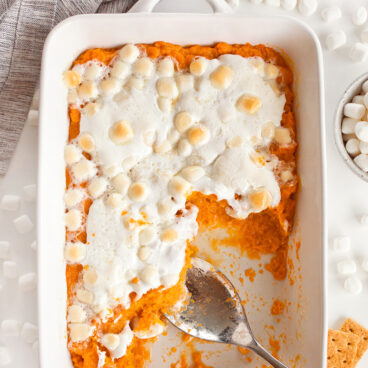
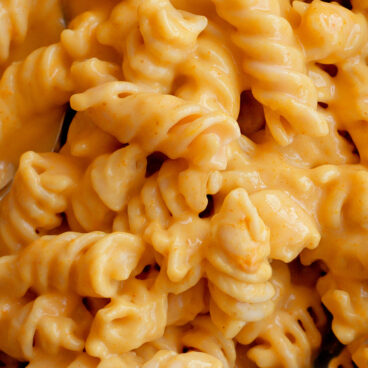
james marty says
So much better than the way I used to cook spaghetti squash!
Mme Peacock says
Roast with the seeds in? Discards the seeds? The seeds are the best part!
Just 1 oz has ~20% of your USRDA of Magnesium and Zinc!
Scoop out the seeds. While the squash is roasting, rinse and separate the seeds from the mesh. Drain and wrap in a towel (paper or cloth) to squeeze out water, then pat to dry. Yes they will stick to the towel, just scrape them off. Spread seeds out in a single layer on a baking sheet. Sprinkle with salt (optional). As soon as the squash comes out of the oven, put in the tray of seed and shut off the oven. When the oven cools, you have roasted seeds!
I do this with all my winter squash seeds from pumpkin to Honeynut.
Ashia says
This was absolutely the best spaghetti squash I have ever eaten! I ate it with shrimp and I had to turn and look at the fork like…. This is amazing! This is now on my favorite food list! There is no other way to make it for me now either. You can get this using a microwave!
M says
BEST way to cook a spaghetti squash, it wasn’t watery at all!
mRiTa says
Soggy spaghetti squash is why I didn’t make too often but roasting like this COMPLETELY eliminated the wet. Brilliant! Now what’s the hack for cutting the dang thing without taking my arm off in the process! That was the other reason I always microwaved whole. I literally had to use a hammer with my chefs knife. Suggestions?
Chocolate Covered Katie says
I wish I had a better method for that too!
Carma says
Baking it with seeds in can cause it to taste strange I have discovered, do this instead. You can microwave it about 6-10mins, cut a line of vent holes lengthwise first where you will finish cutting it in half after it cools a little. When it starts to feel a little soft it is ready, cool about 10 mins, cut in half, scoop out seeds. Season it with a little olive oil and what ever you like for herbs. Put cut sides down on baking sheet, (foil lined) Bake 375F until nicely roasted, usually about 20 mins. It should show a light browning where it is touching the pan. I love it with kielbasa, stir fried onions, peppers, and marinara, Parmesan cheese! Or you can go with just Italian dressing, fresh diced cherry tomatoes roasted in with the squash with shrimp or chicken.
Sherri says
I was just about to give up on this vegetable & then saw your recipe. So happy I tried it! I’ll now be including spaghetti squash into my diet on a regular basis. Thank you!
CCK Media Team says
This makes us so happy, thank you!
Debra Benton says
Best ever! I used a small squash so 30 minutes was right on and the surprise – no excess moisture at all! This is the first recipe I’ve found for spaghetti squash that didn’t require draining. The spaghetti strands were absolutely perfect when topped with spaghetti sauce. Will be a go to recipe for me.
antoinette says
Perfectly cooked! Thank you for the storage tip. We are doing a splash of lemon and fresh parmesan for a light sauce. Baked it for ten minutes in a warmed 350 degrees oven. Very nice.
Josh McCanless says
All of the suggested methods are, in my opinion, the hard way.
Cut the ends off and then cut into equal sized RINGS and sparay or coat with olive oile and salt.
Easy peasy.
Then roast at 350 for 25-35 minutes depending on your oven.
Let it cool and you’ve got single serving spaghetti squash portions and all you need to do at that point is figure out one of the myriad ways of how to eat it.
You’re welcome.
PJ Grove says
I have been using spaghetti squash for a long time. I am a diabetic so this is the only pasta I can eat; and I love it! I basically bake mine close to the way you do. I simply wanted to let you know I always cut mine across the center for longer strands. It comes out great every time! Anyone who is a diabetic & loves pasta needs to try this. Thank you for posting how you cook yours!